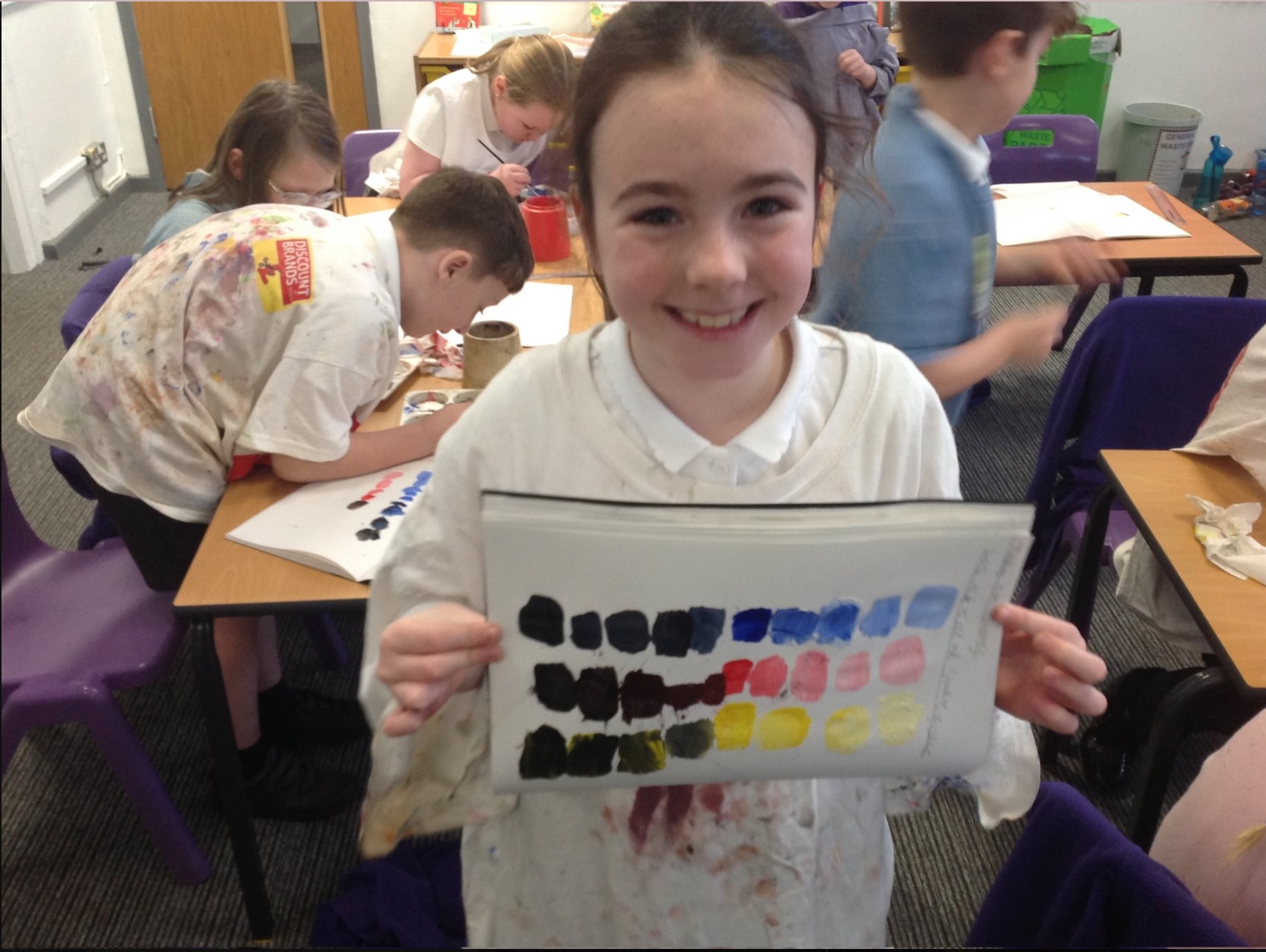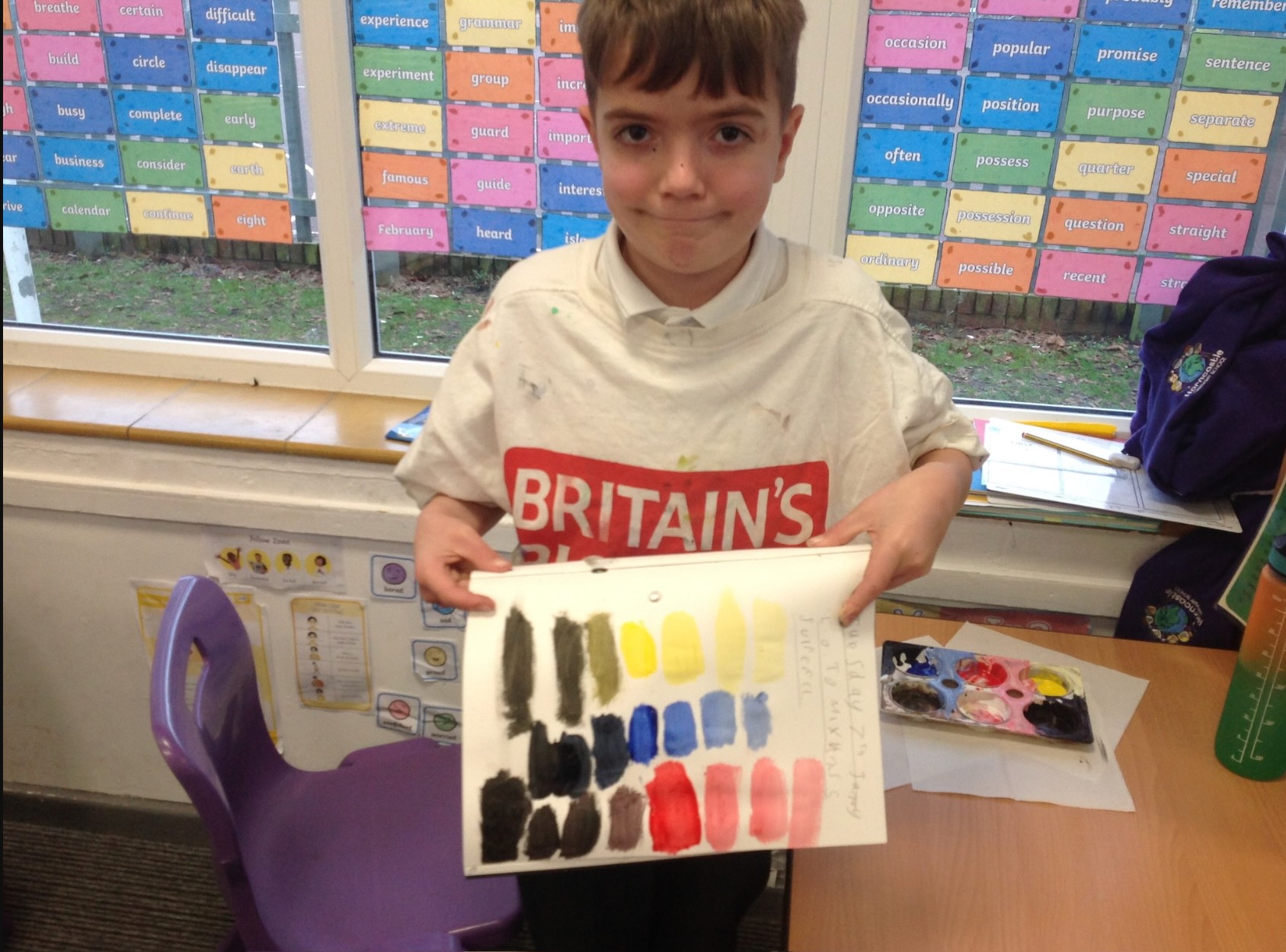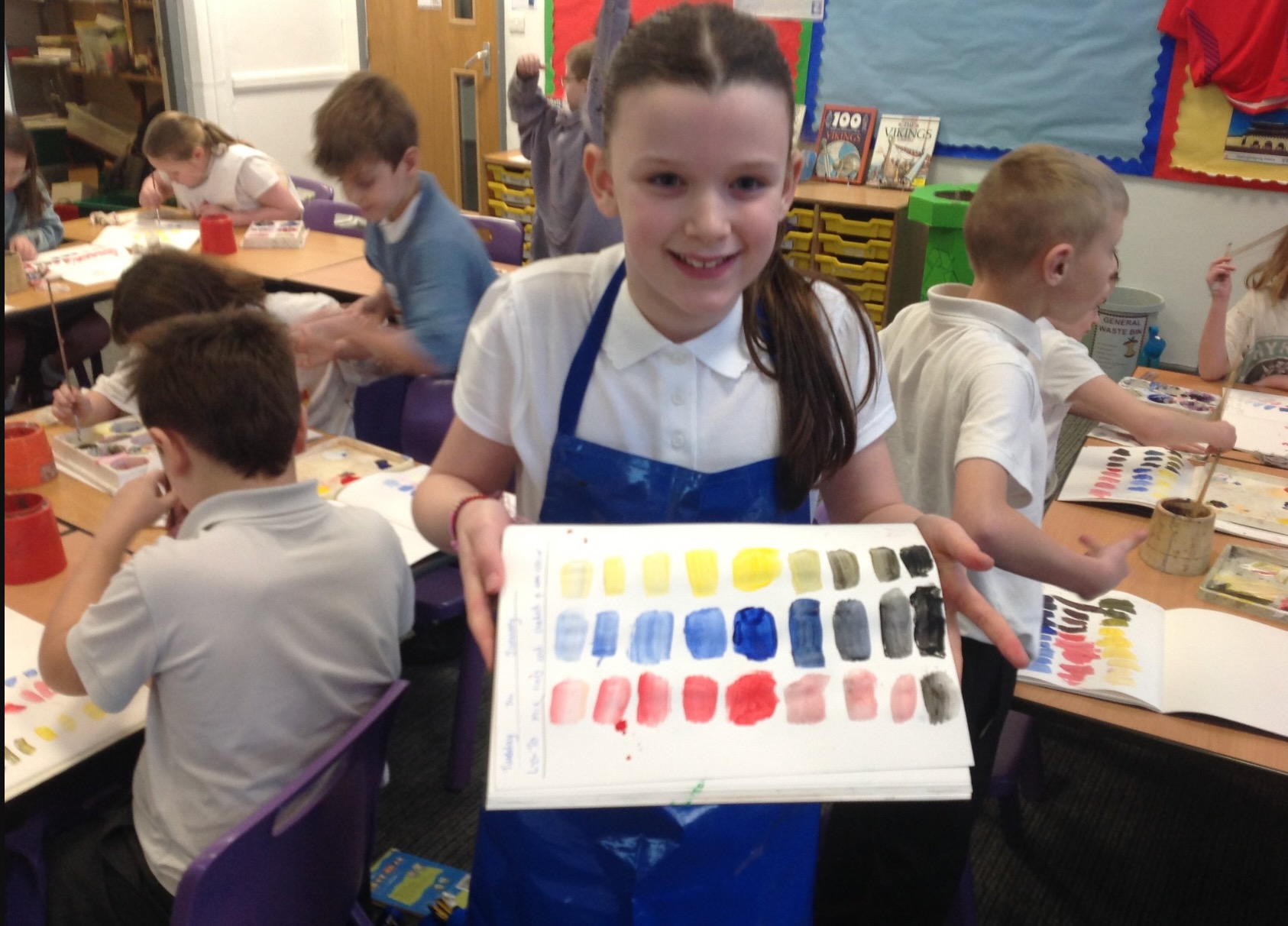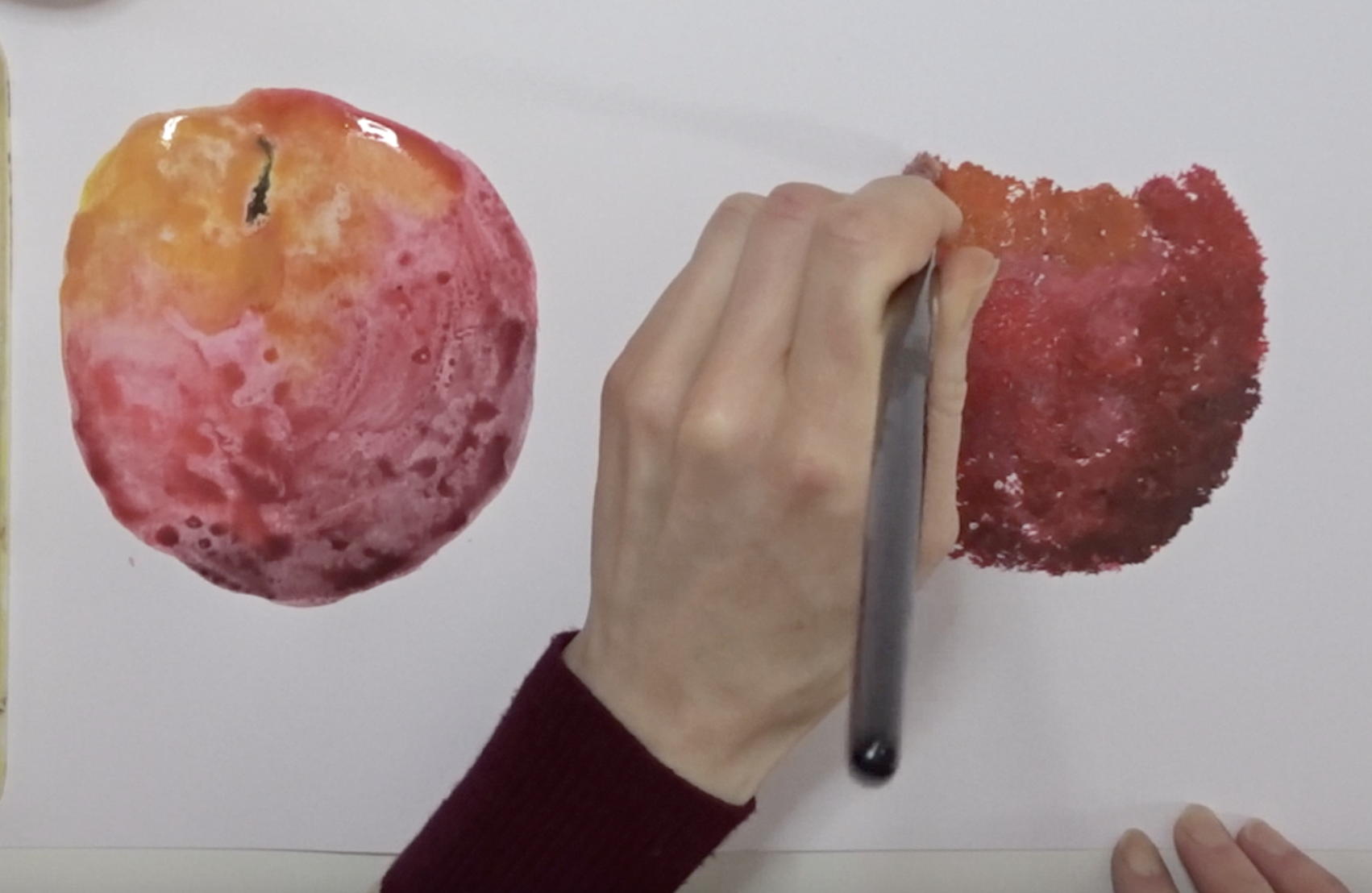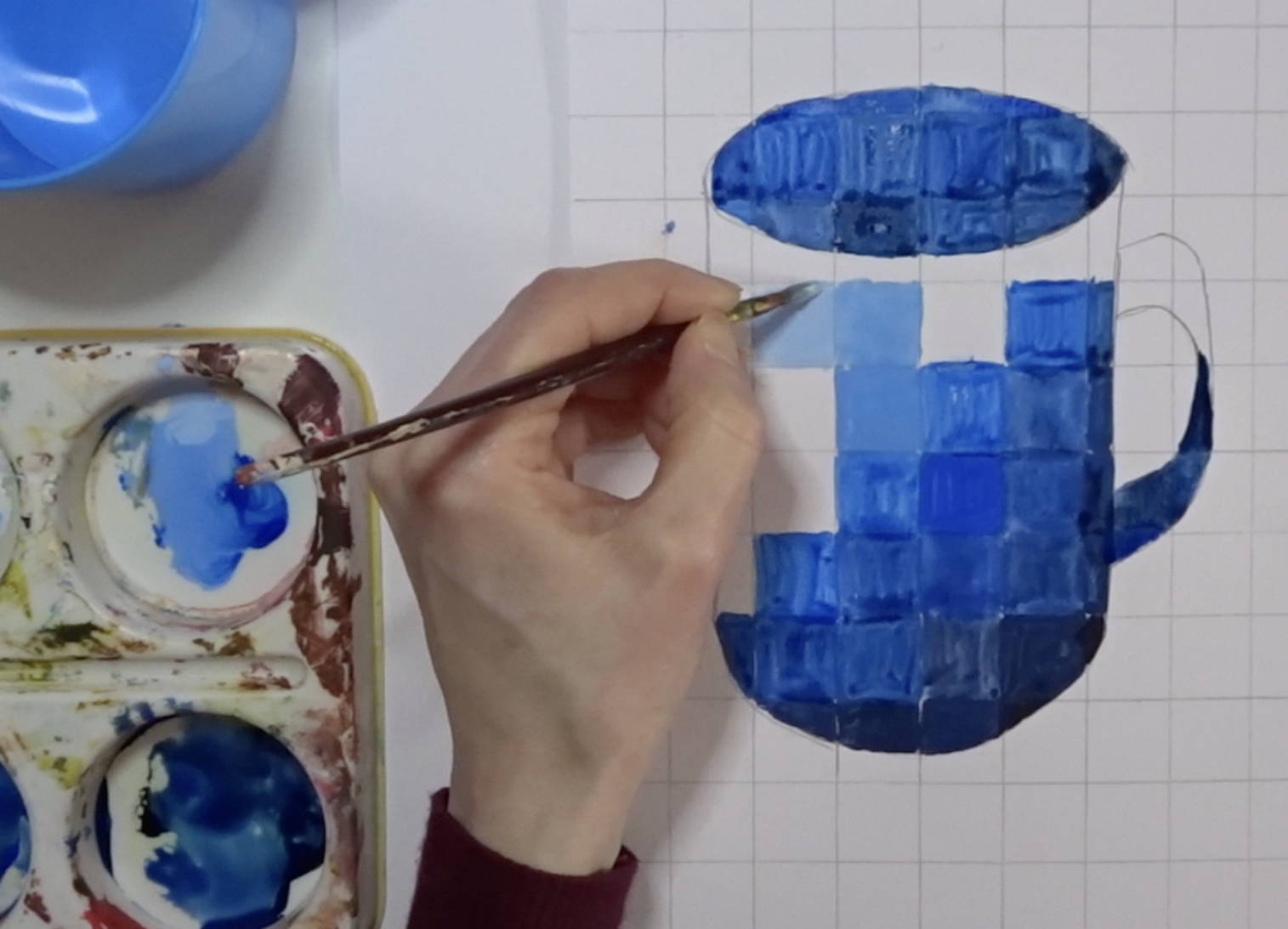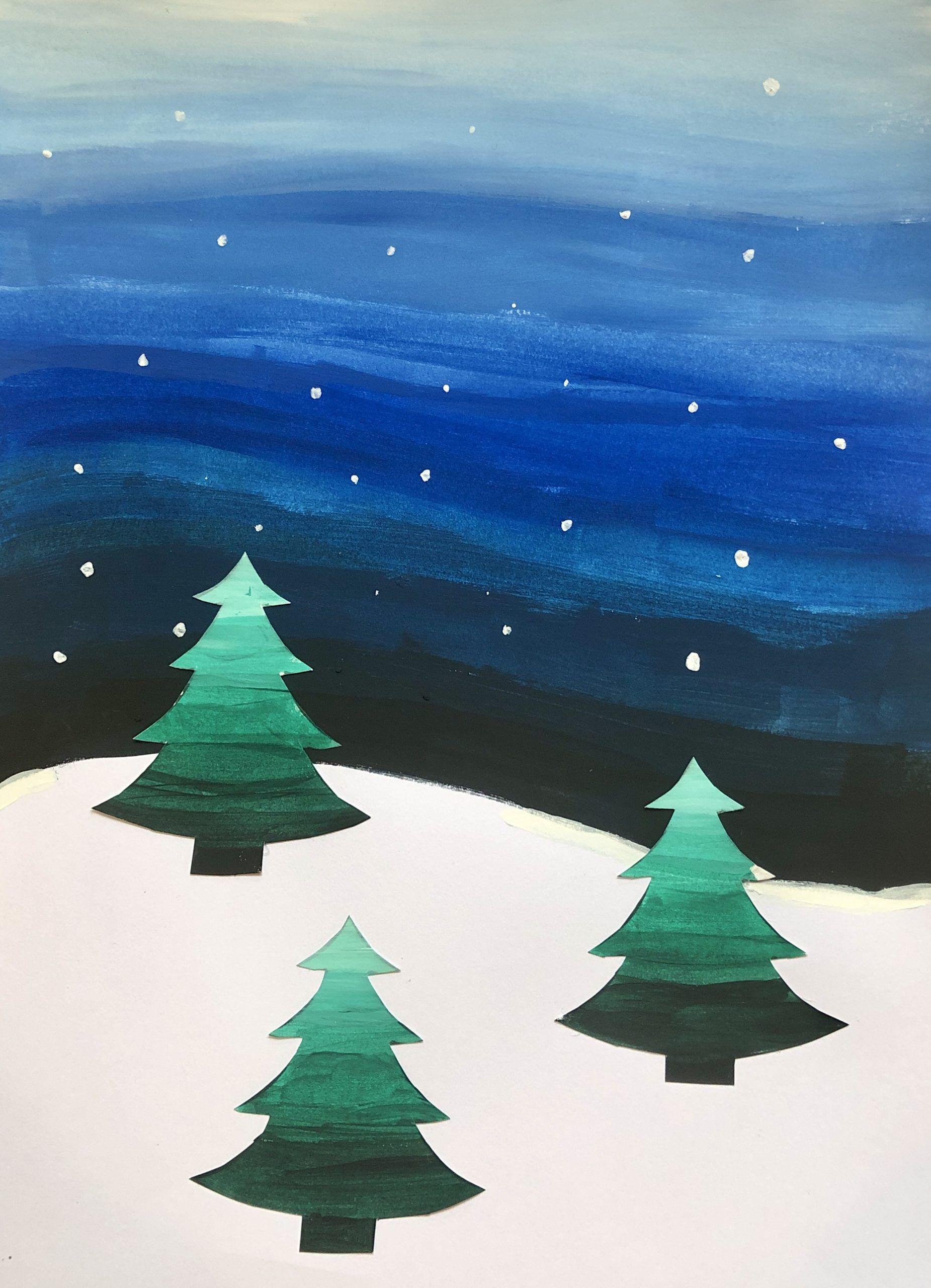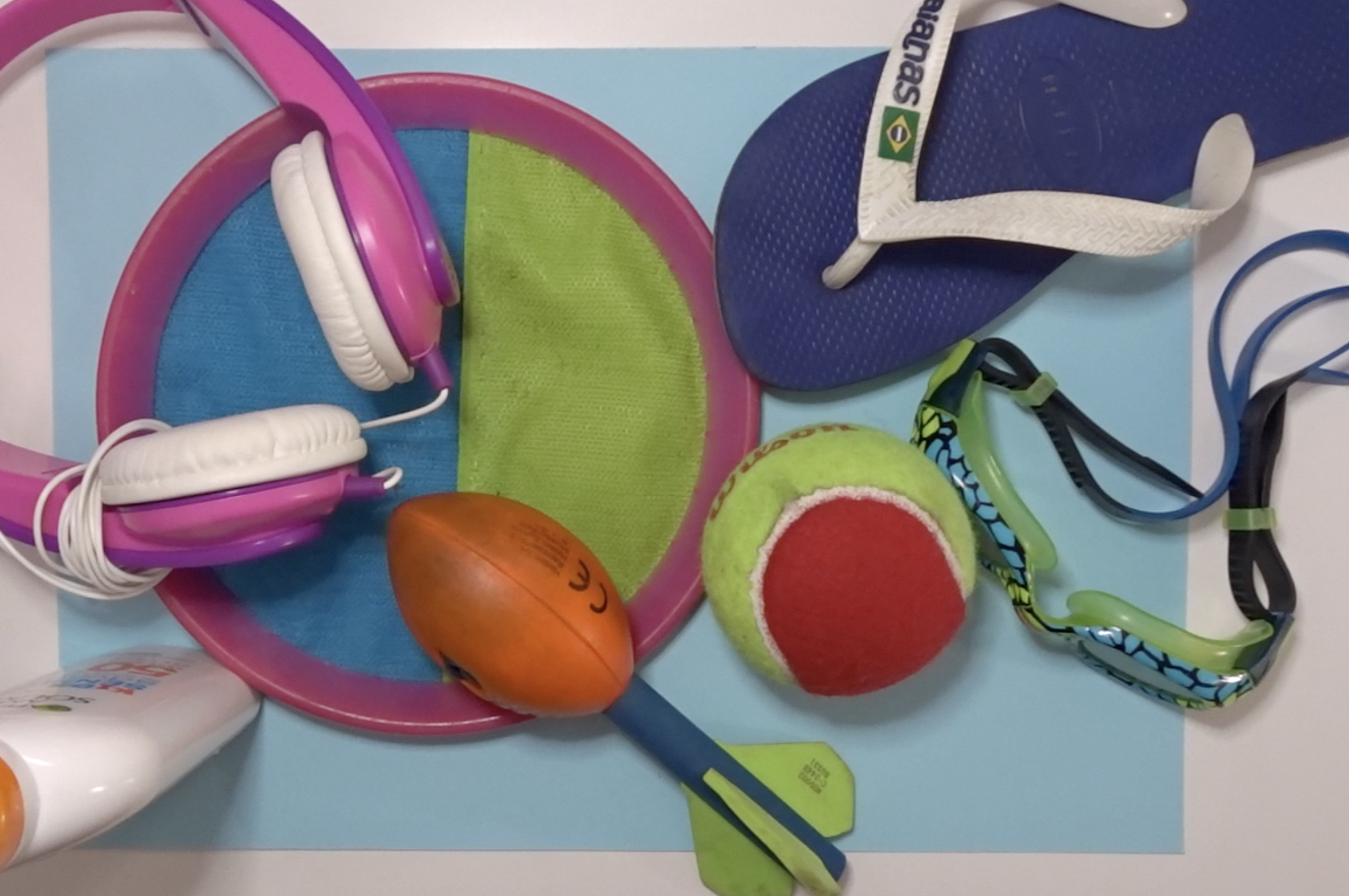Learning objective
- To understand how to darken or lighten a colour when mixing paint.
Success criteria
- I can add white paint to one colour to create a tint.
- I can add black paint to one colour to create a shade.
- I can investigate creating a wide range of colours by mixing tints and shades.
National curriculum
Art and design
Pupils should be taught to:
- To improve their mastery of art and design techniques, including drawing, painting and sculpture with a range of materials [for example, pencil, charcoal, paint, clay].
- About great artists, architects and designers in history.
Cross-curricular links
None.
Before the lesson
Check all images, videos, links and presentation slides are suitable for your class.
- Presentation: Odd painting out.
- Presentation: ‘Mont Saint-Victoire’ by Paul Cezanne.
- Table coverings (for each table).
- Red, yellow, blue, black and white paint (a selection per table group).
- Palettes for mixing (one each).
- Medium paintbrushes (one each).
- Pots of water (one per pair).
- Sketchbooks or paper to paint on (one each).
Print in advance of the lesson.
The Knowledge organiser provides a visual summary of the key facts and vocabulary for the unit. The children can use it throughout the unit to check keyword meanings or spellings and to help them remember important information when completing an activity. Find further ideas for using the Knowledge organiser to support adaptive teaching here.
Lesson plan
1: Recap and recall
Before starting this unit you might want to check children can recall:
- How to use shapes to build initial sketches.
- How to mix colours with natural pigments to make natural colours.
- How to select equipment or paint to recreate specific features.
2: Attention grabber
Display slide 1 of the Presentation: ‘Mont Saint-Victoire’ by Paul Cezanne. Ask individual children to come to the board and identify a dark green or light green. Ask how they would mix a dark green colour, or a light green colour. They may well suggest adding water, adding yellow, white, blue or black.
Presentation: 'Mont Saint-Victoire' by Paul Cezanne
Display slide 2 which introduces the terms tint and shade. To check their understanding, challenge individual children to come to the board and identify a green tint or a green shade from the Cezanne painting on slide 1.
3: Main event
Model yourself or use the Pupil video: Tints and shades to demonstrate colour mixing tints and shades.
Pupil video: Tints and shades
The children now work in their sketchbooks, practising mixing tints and shades of one starting colour. They paint small patches of colour across the page, gradually adding white to make tints and then black to make shades.
- What do we call a colour that has black added to it? (A shade.)
- What do we call a colour that has white added to it? (A tint.)
4: Wrapping up
Ask the children to carry their sketchbooks around the classroom and try to find someone else who has mixed the same (or almost the same) tint or shade of a colour. Tell them to stand by that person once they think they have found a match. Alternatively, children could sit beside someone who has started with a very similar colour and try to identify the closest matching colour in both their sketchbooks.
- Was it easy to find a completely matching colour? Why/why not? (Probably not, because everyone will have added slightly different amounts of black or white to their colour.)
Extended-mode explainer videos
How to extend your display to view the lesson page and preseantion mode simultaneously. Choose your operating system below to watch the video
If you need further support with extending your display,
please contact [email protected].
Extended-mode explainer video: For Mac
Extended-mode explainer video: For Windows
Adaptive teaching
Pupils needing extra support
May need reminding about painting basics: keeping a clean water pot, adding black and white paint a small amount at a time, holding the paintbrush near the bristles for greater control; could use slide 1 of the Presentation: Odd painting out to help them in discussing the paintings.
Pupils working at greater depth
Could investigate the range of colours they can make even with very similar starting colours; should mix two quite similar original colours, e.g. two different greens, and then mix tints and shades of both to observe the differences in colour.
Assessing progress and understanding
Pupils with secure understanding indicated by: being able to share their ideas about a painting; being able to describe the difference between a tint and a shade in painting; mixing tints and shades by adding black or white paint.
Pupils working at greater depth indicated by: being able to use some key art vocabulary to describe similarities and differences between paintings; mixing tints and shades confidently by adding black or white paint gradually.
Vocabulary definitions
-
abstract
Art where the subject doesn't necessarily look like it does in real life.
-
detailed
Looking at features of something which can often be seen most clearly close up.
-
figurative
Creating pictures or sculptures that look like real things.
-
landscape
A picture of countryside.
-
muted
A colour that is not bright.
-
patterned
A design in which shapes, colours or lines are repeated.
-
shade
A dark tone of a colour made by adding black.
-
tint
A light tone of colour made by adding white.
-
vivid
Something that is very bright.



